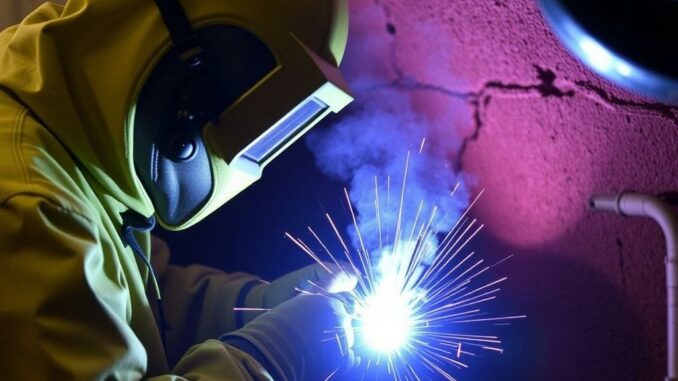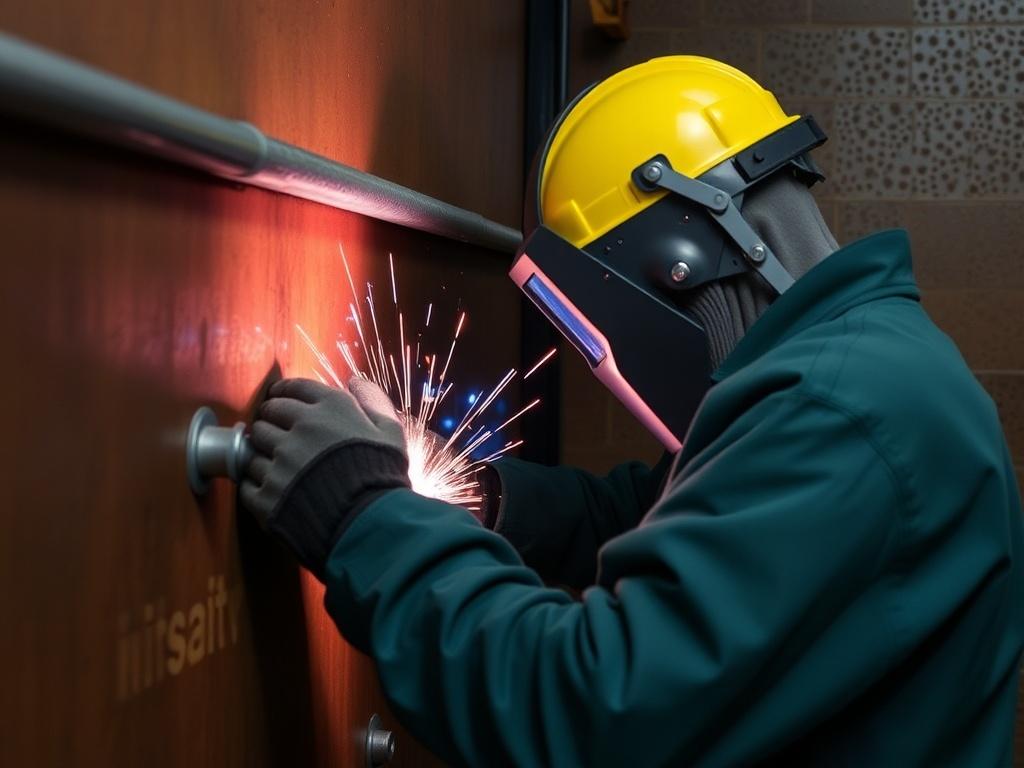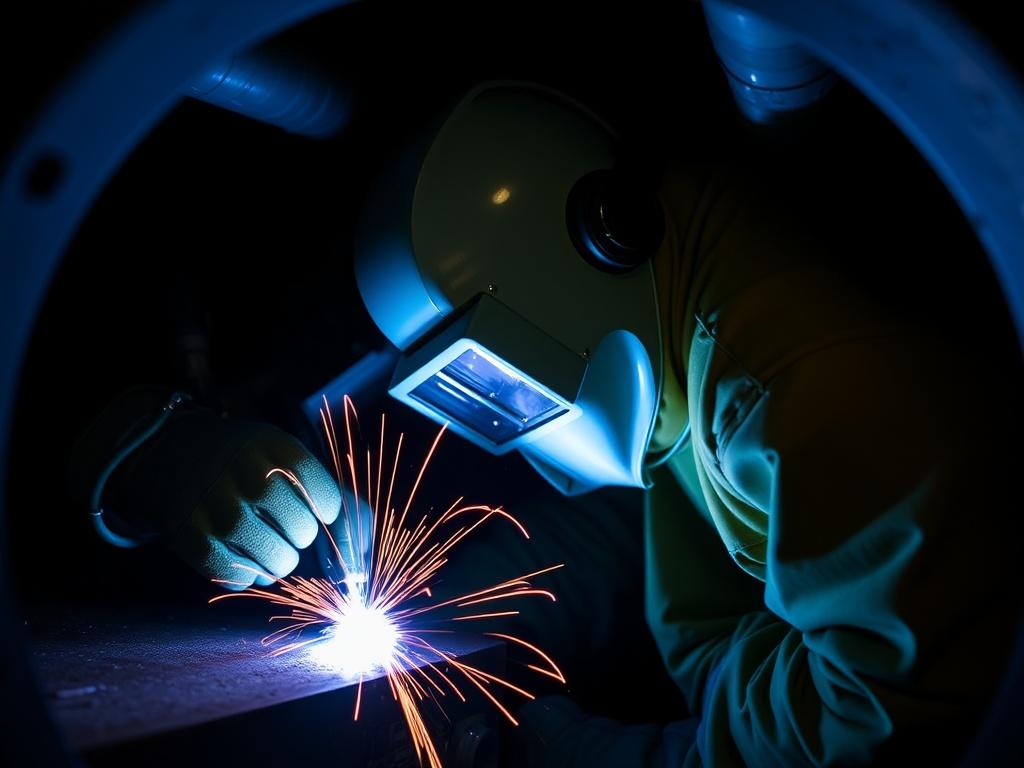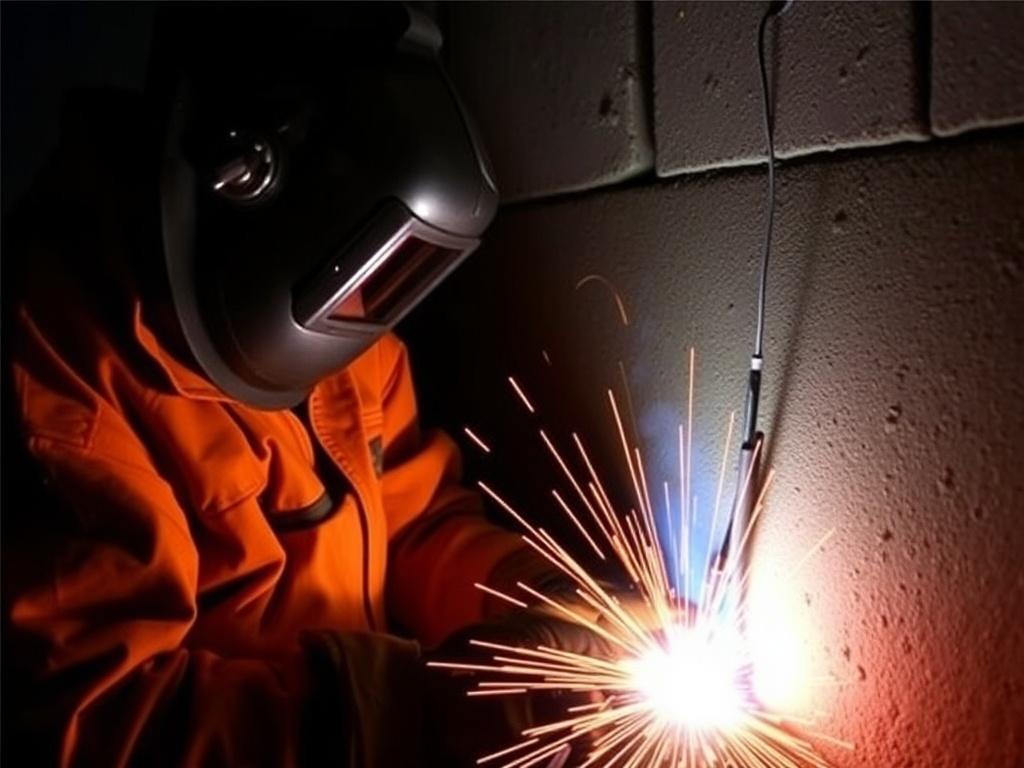
Welding in confined spaces is a task packed with challenges that require not just skill but an unwavering commitment to safety. Whether you’re working inside tanks, vessels, pipelines, or underground tunnels, the risks are higher and the environment more restrictive compared to open-air welding. Understanding how to navigate these tight quarters safely is critical to protect yourself and your team from potential hazards such as toxic fumes, fire, and even asphyxiation.
In this comprehensive article, we will take an in-depth look at welding in confined spaces, focusing on the essential safety protocols you must follow. From preparation and ventilation to personal protective equipment and emergency procedures, each element plays a crucial role in maintaining a secure working environment. Let’s dive in and explore these vital topics step by step.
Understanding Welding in Confined Spaces
Before discussing the necessary safety protocols, it’s important to define what qualifies as a confined space and why welding in such environments requires special attention. A confined space is generally any area that is not designed for continuous occupancy, has limited openings for entry and exit, and may contain hazardous atmospheres. These spaces often have poor ventilation, which can cause dangerous gas buildup or oxygen deficiency, making the work inherently risky.
Welding involves intense heat, sparks, and the generation of gases and fumes. In closed or poorly ventilated spaces, these factors can escalate and create deadly conditions. Fires, explosions, poisoning, or physical injuries can easily occur if proper precautions are not taken. For welders, understanding the confined space environment—and its unique dangers—is the first step to staying safe.
Common Types of Confined Spaces Used for Welding
Confined spaces are diverse in nature depending on the industry and task. Some of the most common confined spaces where welding may take place include:
- Tanks and vessels: Often used in chemical plants or food processing industries, these can be challenging spaces with limited ventilation.
- Pipelines: Welding jobs inside pipelines demand careful planning due to the tight quarters and the risk of gas accumulation.
- Silos and hoppers: Frequently used in agriculture and manufacturing, these spaces pose risks of dust explosions.
- Underground vaults and tunnels: Mining, utilities, and construction projects may involve welding in subterranean confined spaces.
- Ship holds and engine compartments: Shipbuilding and repair work often expose welders to restricted environments with significant hazards.
The Hazards of Welding in Confined Spaces
Welding is always a task that requires respect, but in confined spaces, the risks multiply dramatically. Some of the primary hazards that welders face in these environments include:
| Hazard | Description | Potential Consequence |
|---|---|---|
| Toxic Gases and Fumes | Welding produces fumes that can build up in confined spaces without proper ventilation. | Respiratory illness, poisoning, or asphyxiation |
| Oxygen Deficiency | Use of welding equipment consumes oxygen; limited airflow can reduce levels dangerously. | Loss of consciousness or death |
| Fire and Explosion Risks | Ignition of flammable gases or combustible materials due to sparks or heat. | Severe burns, structural damage, fatalities |
| Physical Injury | Restricted mobility can increase risk of cuts, burns, or crushing injuries. | Serious physical trauma or immobilization |
| Heat Stress | The high temperature from welding and insufficient airflow can cause overheating. | Heat exhaustion or heat stroke |
Key Safety Protocols for Welding in Confined Spaces
Successfully managing the risks associated with welding in confined spaces hinges on strict adherence to well-established safety protocols. These protocols encompass everything from initial risk assessments to the use of specialized equipment and emergency planning. Let’s walk through these crucial steps carefully.
1. Conduct a Comprehensive Risk Assessment
Before you even take the first spark out of your torch, a thorough risk assessment must be conducted. This includes evaluating the confined space’s hazards, identifying potential sources of harmful gases, and determining the condition of the area. Comprehensive risk assessments often involve testing the atmosphere for oxygen levels, flammable gases, and toxic vapors using calibrated detection equipment.
A detailed assessment should list all detected risks and outline controls to mitigate them. This document is the foundation of the safety plan, and everyone involved must be aware of its findings and follow the prescribed procedures.
2. Develop and Implement a Confined Space Entry Plan
Working in confined spaces requires a formalized entry plan that spells out every critical detail. The plan should include:
- Who is authorized to enter
- Atmospheric testing requirements and methods
- Ventilation procedures
- Communication methods
- Emergency rescue procedures
- Responsibilities of all personnel on site
This plan must be accessible to everyone on site, regularly reviewed, and strictly followed without shortcuts or exceptions.
3. Ensure Proper Ventilation and Atmospheric Control
One of the most challenging aspects of welding in confined spaces is maintaining a safe breathing environment. Stagnant air and the accumulation of welding fumes can create health dangers quickly. Therefore, controlling and renewing the atmosphere is critical. This can be done through:
- Mechanical ventilation: Using fans and blowers to force fresh air in and exhaust contaminated air out.
- Air-purifying respirators: When mechanical ventilation alone is insufficient, respirators equipped with appropriate filters help protect welders.
- Continuous atmospheric monitoring: Constantly measuring oxygen, flammable gases, and toxic fumes to detect any changes requiring action.
4. Use Appropriate Personal Protective Equipment (PPE)
Personal protective equipment is your last line of defense. For welding in confined spaces, this gear should include:
| PPE Item | Purpose | Typical Specifications |
|---|---|---|
| Welding helmet with proper shade filter | Protect eyes and face from arc rays and sparks | Auto-darkening recommended, shade #10 to #14 |
| Fire-resistant clothing | Shield against sparks and molten metal | Heavy cotton or leather with long sleeves |
| Respirators or supplied air system | Prevent inhalation of harmful fumes | Powered Air Purifying Respirator (PAPR) or supplied air respirator |
| Gloves and welding boots | Protect hands and feet from heat and impact | Leather gloves, insulated welding boots |
| Fall protection equipment | Required for welding in elevated or unstable confined spaces | Harness and lifeline systems |
5. Establish Reliable Communication Systems
Since confined spaces often limit line-of-sight and can muffle sound, effective communication is essential. Workers inside the space must maintain constant contact with the attendants or supervisors on the outside. This can be achieved through:
- Two-way radios or intercom systems
- Pre-established hand signals
- Regular check-ins at set intervals
Good communication ensures that any signs of trouble are quickly noticed and help can be dispatched immediately.
6. Implement Rescue and Emergency Procedures
Despite taking all precautions, accidents may still happen. A well-rehearsed rescue and emergency response plan is therefore a must. This includes:
- Training dedicated standby rescuers
- Having appropriate retrieval equipment (winches, harnesses)
- Clear communication channels to emergency services
- First-aid readiness and burn treatment knowledge
Time is crucial during confined space emergencies, so regular drills are recommended to ensure everyone knows their role.
Common Mistakes to Avoid When Welding in Confined Spaces

Welding in confined spaces demands vigilance and discipline. Even experienced welders can fall into dangerous habits. Here are common mistakes that should be avoided:
- Skipping Atmospheric Testing: Never assume the air is safe. Always test until you are confident of the environment.
- Ignoring Ventilation Needs: Poor ventilation is a leading cause of incidents. Do not start welding until adequate airflow is guaranteed.
- Inadequate PPE: Using substandard or improper protective gear exposes welders to unnecessary risks.
- Working Alone Without Attendants: Never enter confined spaces without someone present to monitor and assist.
- Rushing the Job: Taking shortcuts or rushing compromises attention and safety.
Training and Certification for Welding in Confined Spaces

Professional training is non-negotiable for anyone tasked with welding in confined spaces. Specialized courses teach welders how to assess hazards, use monitoring equipment, and apply safety protocols effectively. Many employers require certifications that demonstrate competence in confined space entry and welding practices.
Training topics typically include:
- Identification of confined spaces and associated hazards
- Use of atmospheric testing instruments
- Proper ventilation and respiratory protection
- Confined space regulations and standards (e.g., OSHA, ANSI)
- Emergency response and rescue techniques
Continuous education is also important, as regulations and equipment evolve. Invest in training not only to comply with laws but to cultivate a culture of safety that protects lives.
Summary: Staying Safe While Welding in Confined Spaces
Welding in confined spaces is a demanding job that calls for careful planning, knowledge, and responsibility. Every step — from risk assessment and planning to use of PPE and emergency readiness — must be executed meticulously to minimize danger. Remember these core safety protocols:
- Conduct thorough risk assessments and atmospheric testing before entry
- Create and follow a detailed confined space entry plan
- Maintain continuous ventilation and atmospheric monitoring
- Wear appropriate and high-quality personal protective equipment
- Maintain clear communication between workers and attendants
- Have a rescue plan with trained personnel and proper equipment in place
- Keep up to date with training and certifications in safe welding practices
By respecting these protocols, welders can protect themselves from the serious hazards presented by confined spaces and complete their work safely and efficiently. Safety is not an obstacle but the foundation of quality welding in any environment — especially ones as unforgiving as confined spaces.
Additional Resources and References

For those wanting to deepen their knowledge or ensure compliance with industry standards, here are some useful resources:
| Organization | Resource | Link/Reference |
|---|---|---|
| Occupational Safety and Health Administration (OSHA) | Confined Spaces — Welding and Cutting Safety Guidelines | osha.gov/confined-spaces |
| American Welding Society (AWS) | Welding Safety Standards and Certifications | aws.org/safety |
| National Fire Protection Association (NFPA) | Fire Prevention for Welding Operations | nfpa.org |
Thank you for reading this detailed guide on welding in confined spaces. Stay safe, stay informed, and never compromise on protocols. Your life and wellbeing depend on it.
